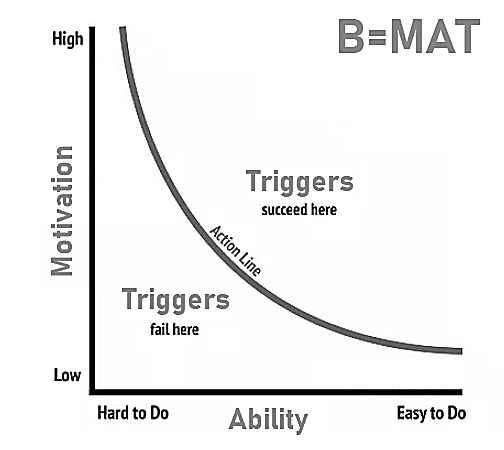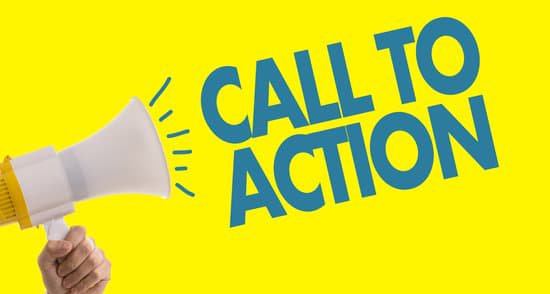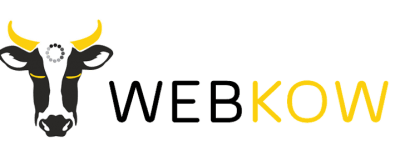
The BJ Fogg Behaviour Model for Digital Marketing
The Behaviour Model designed by Dr. BJ Fogg has been quite influential in determining when a behavior occurs.
In digital marketing, the simple model has three unique advantages:
- It is simple. Therefore, it is easy to explain and implement.
- It is universal. It can be used for any industry’s digital marketing, since all industries have the human element in common.
- It is quite comprehensive, in that with this model alone you get more than 80% of your behavioural understanding for digital marketing right.
What exactly is the Fogg Model of Behaviour?
The model shows that there are three elements that must meet for a behavior to occur:
- Motivation: the individual must be motivated to perform the behavior
- Ability: the individual must have the ability to perform the behavior
- Trigger: there’s a trigger- internal or external- which prompts the behavior.
For example, a person with a small income may have the motivation to buy the most expensive car in the market, but may not have the ability (financially) to do so. In that case, the behavior won’t happen even if they pass a car shop displaying that car. On the other hand, a person may have the ability to buy a horse ranch, but may not have any interest in horses (motivation) even if they see an online ad for one in their city. In this case too, the behavior will not occur. Let’s take a third example. Someone may be keen to read a particular book (motivation), have the resources to read it and to buy it (ability), and sees that book in a shop at a discount (trigger). In this case, the behavior is likely to occur.

What this shows is that only when the motivation is high enough and the ability (ease of doing something) required low enough for a person will they act. In some cases, a lot of motivation may compensate for low ability or ease of doing something. (For example, someone motivated to lose weight before a wedding may go to the gym even if it is very expensive for them or very far from their home.)

So, how can digital marketers make use of this simple model?
Simply put, people respond to your campaigns or advertisements in this same way. Take these two examples:
Example 1: People visit your website but do not subscribe to the newsletter. In this case the ability or ease with which they can subscribe is very low, but their motivation is even lower. You can increase the motivation by offering a 20% discount code or a free e-book for signup. It is also possible that they simply didn’t notice the signup box on your website. In this case, there was no trigger to cause action. You may add a popup box to trigger the behavior, if signups are important for your business.
Example 2: People are looking for a complex B2B solution which you offer. They click on a Google Ad you’re running but do not continue the process. This may be because they perceive the process to be very complicated, or very expensive (missing ability). You can make this easier by stating things like “Our prices are best in the market. It only takes ten minutes to get started with our free expert consultation.” This may increase the chances of them converting as a lead.
In the first example, the ability required was low but the motivation was even lower. You can tip the scale by incentivizing the behavior. In the second example, the motivation to find a solution was high but the perceived ability required was also high. You can make the process easier, use less intimidating words, and use phrases like “step by step guidance” or whatever else may apply to your case to ease the person on the other end. In both cases, a clear, prominent trigger (usually referred to as “Call to Action” in digital marketing) is required.
A simple step by step method in which you can use the Fogg Model of Behaviour for any digital campaign is as follows:
- First, identify whether your prospects are motivated or not to take the action you want them to take. (Such as subscribing, signing up for an offer, making a purchase etc.)
- If they’re not motivated, find a way to make the offer more enticing for them to motivate them.
- Next, identify whether the action you’re asking for is easy for them or complicated and intimidating, or perceived so. It may be that they think the decision will cost them too much, or the risk is too much, or the complexity of it makes them procrastinate their decision.
- If this is the case, make the process easier. Don’t use industry jargons, have a conversational tone in your website, social media or videos, and showcase how the process is easy and your guidance is always available.
- Finally, don’t forget that the behavior will not happen without a trigger. Use a clear CTA (Call to Action) on every webpage or even social media post. If there’s a button the user needs to click, such as “add to cart” or “Submit”, make it prominent, big, and use a colour that contrasts the page background. Such simple steps make the trigger more prominent and increase the chance of the desired action being taken.

About the Author:
Neeraj Ramnani is the founder of GrowthFoundation.in and WebKow.com. He is a digital marketer since 2011, and has pioneered some of the most innovative approaches in this field over these years. He’s worked with over 40 brands for their result-oriented digital marketing.
He’s an alumnus of IIM Indore and SVNIT Surat.


Leave a Reply
You must be logged in to post a comment.